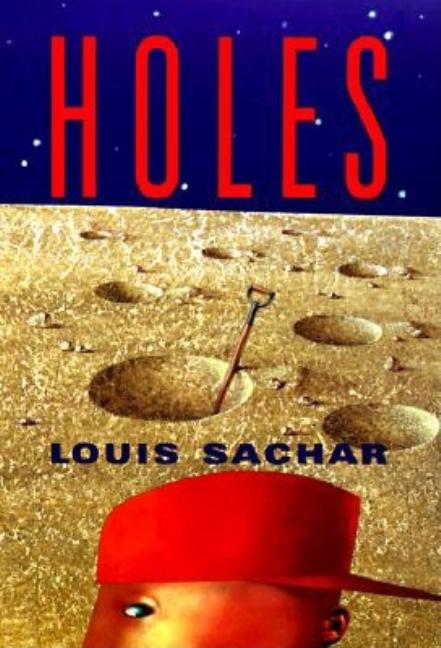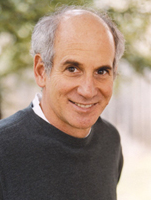Meet-the-Author Recording with Louis Sachar
Holes |
Louis Sachar introduces and shares some of the backstory for creating Holes.
Translate this transcript in the header View this transcript Dark mode on/off
Louis Sachar: Hello. This is Louis Sachar, and I'm the author of Holes. I'm going to try to tell you a bit about how I came to write this book, although like all my books, once a book is finished, it's hard to remember exactly how it all came about. Mostly, this began because we had just moved from San Francisco to Texas, and the weather is cool and misty in San Francisco, and it is hot in Texas, to say the least. So part of it was just writing about the heat.
Also, it was, I think my 18th book, and all my other books up to that point had been about kids in school. I tried to come up with something different. I was tired about writing about kids in school, and then I thought, "Well, why not put them in a juvenile detention center?" I thought kids would get a kick out of that. In fact, right around that time, we went back to San Francisco. My daughter was I think about third grade then. We went and visited Alcatraz, and she was fascinated with it, and I thought, "Ooh, I'm on to something here."
I'll now read a short excerpt from the book, right from the beginning.
Chapter One. There is no lake at Camp Green Lake. There once was a very large lake here, the largest lake in Texas. That was over 100 years ago. Now it is just a dry, flat wasteland. There used to be a town of Green Lake as well. The town shriveled and dried up along with the lake and the people who lived there. During the summer, the daytime temperature hovers around 95° in the shade, if you can find any shade. There's not much shade in a big, dry lake.
The only trees are two old oaks on the eastern edge of the lake. A hammock is stretched between the two trees, and a log cabin stands behind that. The campers are forbidden to lie in the hammock. It belongs to the warden. The warden owns the shade. Out on the lake, rattlesnakes and scorpions find shade under rocks and in the holes dug by the campers.
Here's a good rule to remember about rattlesnakes and scorpions. If you don't bother them, they won't bother you, usually. Being bitten by a scorpion, or even a rattlesnake, is not the worst thing that could happen to you. You won't die, usually. Sometimes, a camper will try to get bitten by a scorpion, or even a small rattlesnake. Then he will get to spend a day or two recovering in his tent instead of having to dig a hole out on the lake.
But you don't want to be bitten by a yellow spotted lizard. That's the worst thing that could happen to you. You will die a slow and painful death, always. If you get bitten by a yellow spotted lizard, you might as well go into the shade of the oak trees and lie in the hammock. There is nothing anyone can do to you anymore.
Two. The reader is probably asking, "Why would anyone go to Camp Green Lake?" Most campers weren't given a choice. Camp Green Lake is a camp for bad boys. If you take a bad boy and make him dig a hole every day in the hot sun, it will turn him into a good boy. That was what some people thought. Stanley Yelnats was given a choice. The judge said, "You may go to jail or you may go to Camp Green Lake." Stanley was from a poor family. He had never been to camp before.
This Meet-the-Author Recording with Louis Sachar was exclusively created in December 2007 by TeachingBooks with thanks to Farrar, Straus and Giroux.



